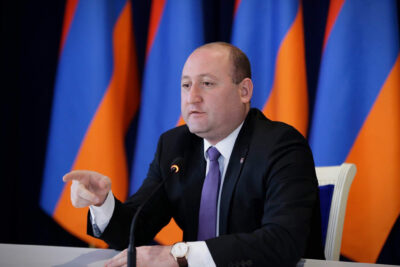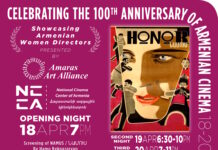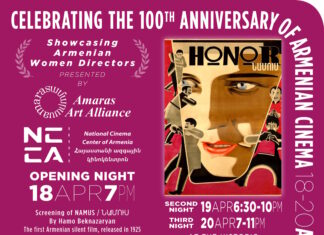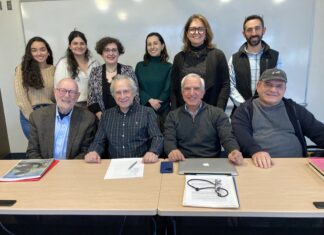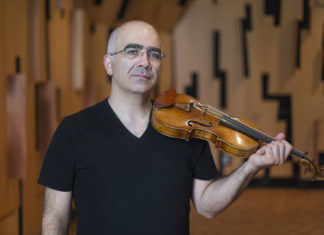PetaPixel: First Bob, how did you initially come into photography?
Bob Avakian: I could say my first formal introduction to photography came in the early 70’s when I took a photography class as an art elective while in college. Soon after, I moved to Martha’s Vineyard.
I still had my camera but going from NYC to a quiet island was a big change and street photography was too intimate on a small island, so the camera got put away except for taking photos of family, friends and my construction work projects. A few years ago I took an architectural photography class at Maine Media Workshops. That experience rekindled an old passion for photography.
PP: Who are some of your biggest photographic influences, and what makes their work special to you?
BA: I can remember a long time ago having an Ansel Adams poster on my bedroom wall. Guess that would make him my first influence. But, my Maine Media experience with architectural photographer Brian Van den Brink got things really started for me.
After that I enrolled in a portfolio building/critique workshop offered by the Griffin Museum of Photography in Winchester Ma. It is called the Atelier, and is led by Karen Davis and her assistant Meg Birnbaum. Without a doubt I can say it has been the most influential to the development of my work.
Locally, here on Martha’s Vineyard I have had the opportunity to meet Stephen Dirado, who has been working at night for years. In fact he photographed comet Hale Bop in the ’90s.
There are so many other photographers work I admire, but one stands out, Todd Hido, I recall reading him discuss his process, saying how much he drives around and thinking “hey, that’s what I do” and immediately bonding with him. But of course it’s more his photography, it’s really appealing. I only hope to meet him someday.
PP: One of the hallmarks of your work is the softness of light and color that remains consistent from one picture to the next. Can you tell us a little about the techniques you use to capture these scenes?
BA: This style began to emerge while I was building my portfolio of night photos. It really appealed to me, so I latched on to it and started to build on it as much as I could.
After one of my first portfolio reviews, I learned the importance of a “tight and cohesive body of work.” So editing became a crucial component, and in order to tighten it up I needed a lot of photos to select from. Of course, some of this aesthetic is achieved while processing the photos in Adobe Lightroom.
My night photos don’t look like much when first loaded into the computer so they need to be enhanced. But one thing is for sure. If it’s not there to start with its not there in the end.
PP: Talk about the moods and emotional tones you look to set in your work. There seems to be a thread of quietness and meditation that binds these scenes together…
BA: That question most definitely hits on what my experience of photographing the landscape at night is. The stillness of the night and the mind while being out alone in the natural environment is what makes this all so special. It is a very private experience and as you suggest, a conscious meditation. It is all about finding the right place and getting into the right mind to capture its essence.
PP: As a follow-up, talk us about your interest in the landscape in general. What draws you to photography these outdoor scenes and not, say, portraits or still life?
BA: I live surrounded by the natural landscape, so in a way it is a matter of convenience for me. A lot of my photos are taken just minutes from my home. I have done some still life and portrait work but without any doubt, being outdoors is my first choice at the moment. I feel much more comfortable than when I am photographing people.
PP: Many of these scenes remind me of other artists, Gregory Crewdson and Edward Hopper particularly. There’s a sense of emotion and mood that you share with these two artists, as well an interest in the New England architecture aesthetic, which they are both famous for depicting. Have you looked to these two for inspiration? What interests you in the atmosphere of New England?
BA: Crewdson and Hopper! Thank you very much. Though, this is not the first time either of those two names have come up. Once at a portfolio review Crewdson’s name came up as I was being told my work had a cinematic looks to it. That was truly mind-blowing. Same for Hopper, though I was more familiar with his interior work.
New England is home to me, especially the rural location of Cape Cod and the Islands. I have been living on the Vineyard for the last 40 years. So it may be more of a coincidence. My surroundings are an inspiration in themselves, and I take pleasure in being able to show them in a fresh way.
PP: When looking through these images, I very much get a sense of searching and discovering. I can almost put myself in your shoes, exploring the landscape and feeling a type of kinship with the environment and its surprises. Is this experience of searching an important part of this work for you?
BA: Yes, I think you nailed it. For me it is like the hunt, the capture, then the reward. You know, living so close to the sea, I have done a lot of fishing, and nighttime surf fishing at that.
If you think about it, there are quite a lot of similarities between fishing and photography. You gather up your gear, load the car and head out. Find the spot you think will be productive. You get yourself and your equipment ready. Bait your hook and cast it into the water then wait. You might wait all night and not get anything, or, if you’re lucky, your rod will bend over and the line will start spinning off the reel. Now you have to land it and hope it’s a keeper. If it is you get take it home to cook for dinner and then enjoy; with a big smile.
PP: Beyond New England, are there other locations or environments you’re interested in exploring? Perhaps seascapes or industrial locations?
BA: It’s funny you mention seascapes, I am surrounded by them. Used to be when I would head out the sea was my first destination, still is actually, but when I get there sometimes I look the other way. There are still lots of places here I have yet to visit. I have traveled to urban locations to do night photography. The results are a lot different, so for now I’ll stick to the rural environment.
PP: What’s the key to making a great night-time image?
BA: I have learned you need to have a lot of patience. It takes time to get your exposure correct and to focus properly. Taking plenty of high ISO test shots will help with this. Using your histogram (digital) to determine your final exposure.
Otherwise choosing the right night is important, for me it’s all about the sky. I don’t always know when I am going out, but opening up the kitchen door and looking at the sky could make me suddenly wind up in my car and hitting the road.
PP: Lastly, what’s coming up for you over the next year, photographically or otherwise?
BA: Continuing the learning process, experimenting, building the portfolio, and perhaps working to develop a new body of work.
PP: Thank you for your time Bob.
